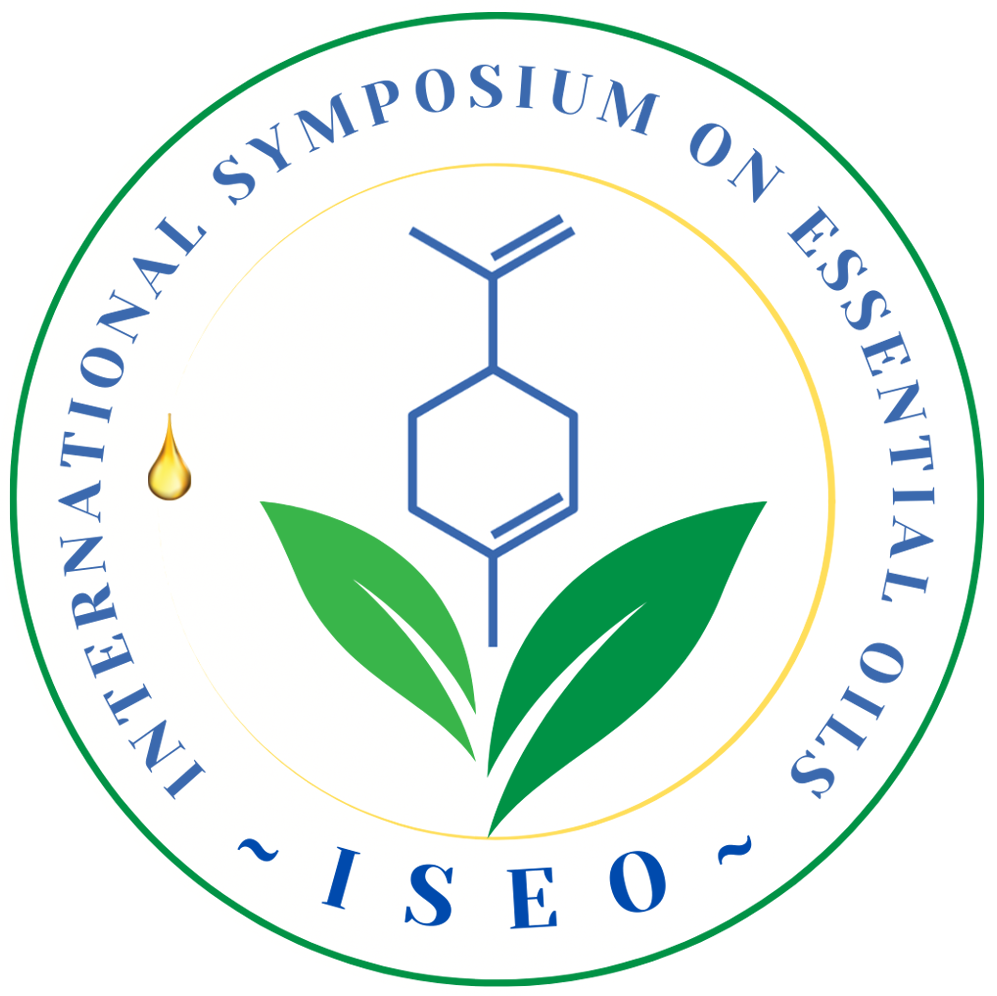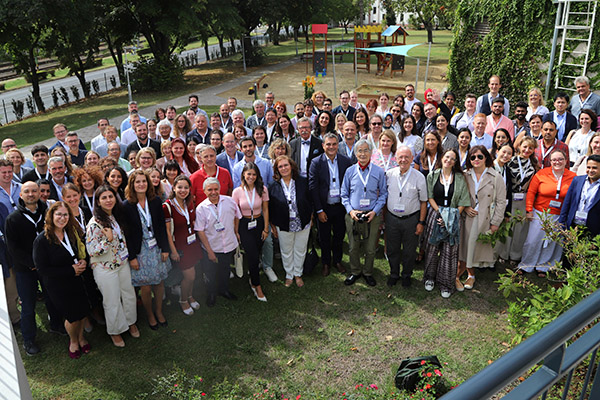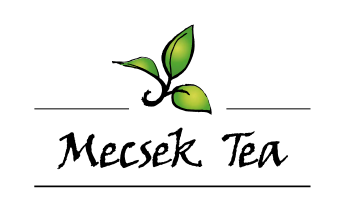About the Event
It is our great pleasure to announce the 54th International Symposium on Essential Oils (ISEO 2024), which will be held in one of the most peaceful Hungarian cities, Balatonalmádi, on 8-11 September, 2024. Balatonalmádi is a rapidly developing, busy resort town in the county of Veszprém, near the northeastern bay of Lake Balaton. It is one of the most popular tourist destinations at the Lake Balaton. The city's population has started to grow rapidly in recent years. By 2021, the city's population has already exceeded 10,000. In the summer, it offers many exciting programs for its visitors. The church of Szent Imre in the center of the city was built in 1930 based on the plans of István Medgyasszay. The special value of the church is that it follows the traditions of Transylvanian architecture, but the red stone architecture is also dominant. The place of the ISEO 2024 will be the Hungest Hotel Bál Resort. The interior design of the hotel, fully renovated in 2022, was inspired by the diversity of Lake Balaton. The goal was to make guests feel close to the tranquil harmony of the lake and the waterfront. The rooms offer a picturesque panoramic view, so quests can easily immerse themself in the relaxing scenery of the thousand-faced Lake Balaton in all seasons.
ISEO symposia have been organized annually in Europe since 1969 (with an exception in pandemic year of 2020). Each year, this Symposium provides an excellent possibility for academic and industrial scientists, partners for a discussion of the latest and novel research findings focusing on essential oils, volatiles and related natural products. Several representatives of the essential oil industry are also invited to join this scientific congress. The ISEO attracts the attention of participants not only from European countries but also from the broader scientific world focusing on essential oils, e.g. South Africa, Turkey, United States, Brazil, Chile, Japan, Israel, Egypt, among others.
We offer you highly scientific topics, stimulating presentations and deep discussions combining with colorful touristic activities around Lake Balaton.
We cordially invite participants to present the results of their research activity via oral communications or posters. Invited plenary lectures will open every session of the final program. Scholarships will be provided to support the participation of young researchers interested in attending the conference.
Looking forward to meet you in BALATONALMÁDI,
Györgyi Horváth,
Chair of the ISEO2024 Local Organizing Committee
Where
Hunguest BAL Resort,
Balatonalmádi, Hungary
When
Sunday to Wednesday
8-11 September 2024
Event Venue
Event venue location info and gallery
Hunguest BÁL Resort - Balatonalmádi, Hungary
The interior design of the hotel, fully renovated in 2022, was inspired by the diversity of Lake Balaton. The goal was to make our guests feel close to the tranquil harmony of the lake and the waterfront. Our rooms offer a picturesque panoramic view, so you can easily immerse yourself in the relaxing scenery of the thousand-faced Lake Balaton in all seasons.
ISEO 2024 Local Organizing Committee

Györgyi Horváth
Chairperson
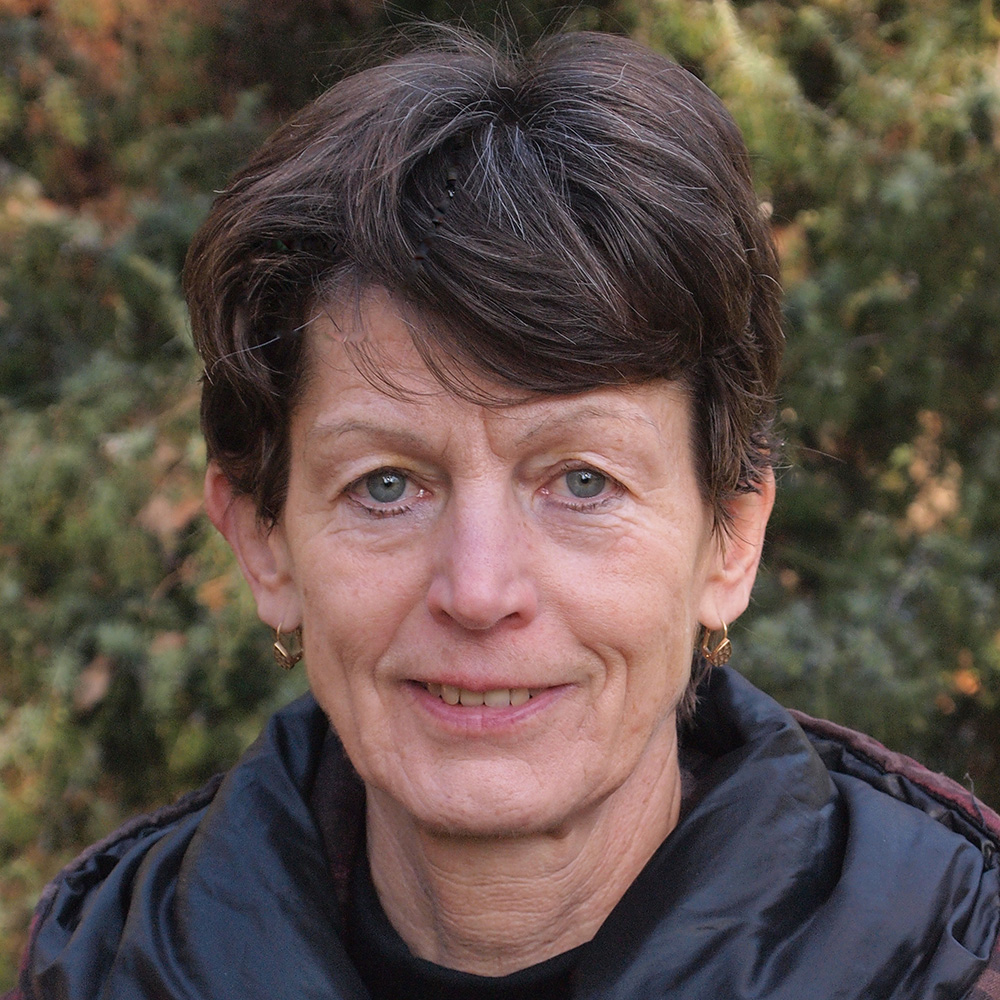
Éva Németh-Zámboriné
Chairperson

Viktória Lilla Balázs
Committee Member
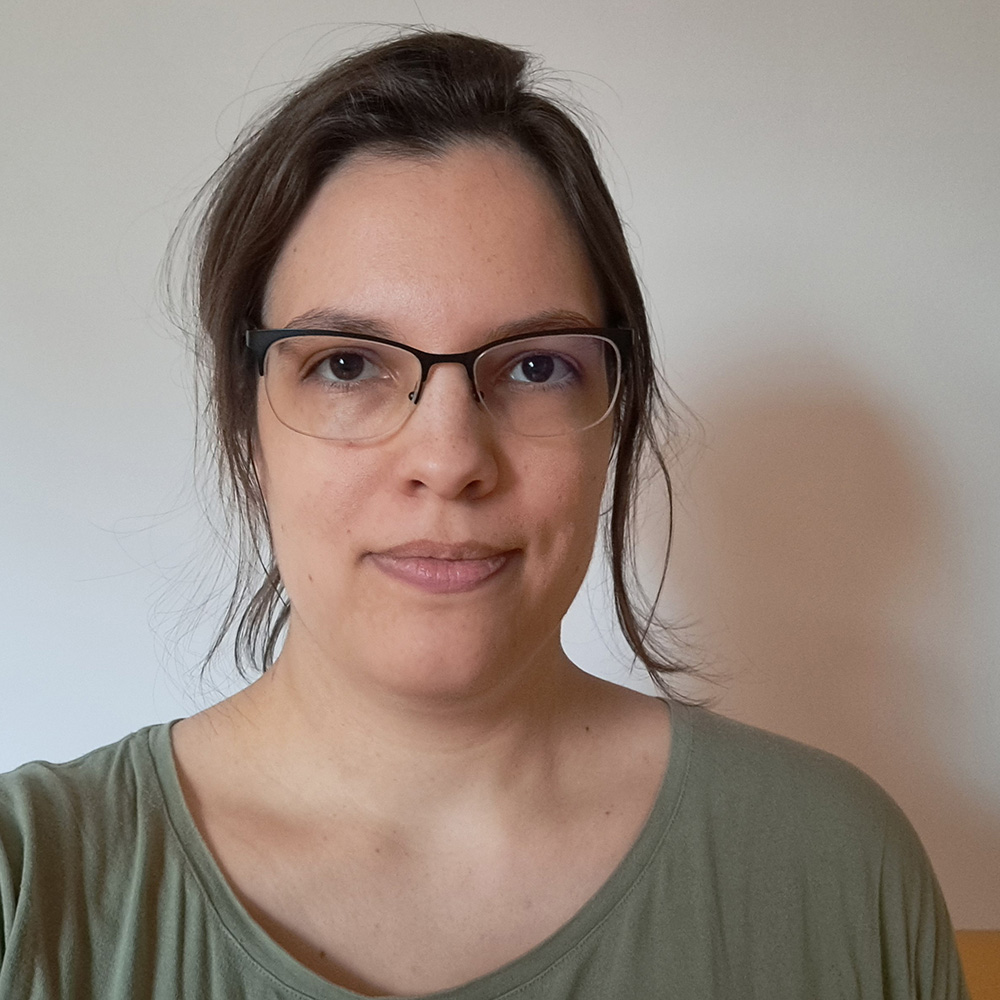
Eszter Csikós
Committee Member
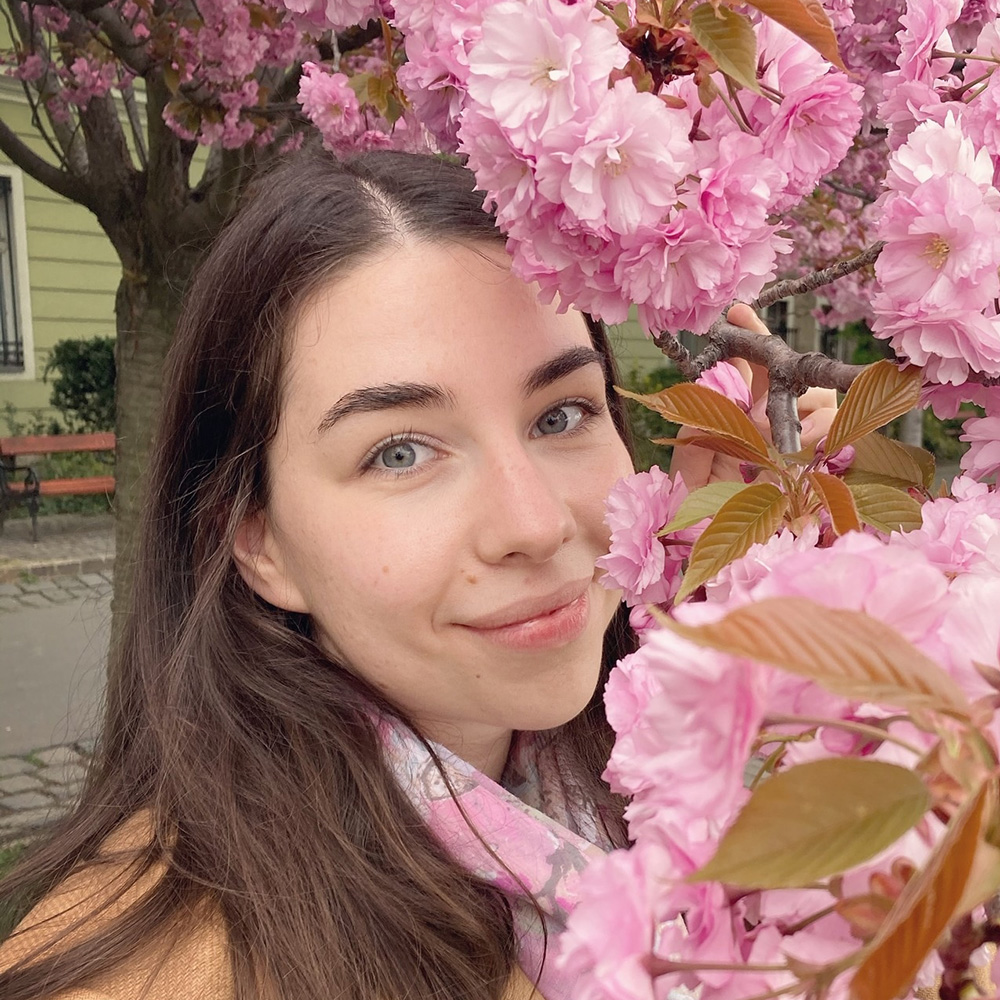
Edit Ormai
PhD Student

Bence Bordás
PhD Student
Permanent Scientific Committee
Tokushima Bunri University, Japan
University Côte d’Azur, France
Near East University, Cyprus
University of Turin, Italy
Embrapa Food Technology, Brazil
IFEAT, UK
Anadolu University, Turkey
European Flavour & Fragrance, Belgium
University of Messina, Italy
KU Leuven, Belgium
University of Lisbon, Portugal
Saitama University, Japan
University of Pécs, Hungary
The Philipps University of Marburg, Germany
National Institute of Technology, Okinawa College: Nago, Japan
Wrocław University of Science and Technology, Poland | Institute of Cosmetology, Wrocław College of Physiotherapy
Medical University of Lublin, Poland
University of Messina, Italy
University of Veterinary Medicine, Austria
University of Niš, Serbia
Universtity of Turin, Italy
The University of Vienna, Austria
Wrocław University of Science and Technology, Poland
University of the Witwatersrand, South Africa
Tshwane University of Technology, South Africa
Hungarian University of Agriculture and Life Sciences, Hungary
Programme
Invited Speakers
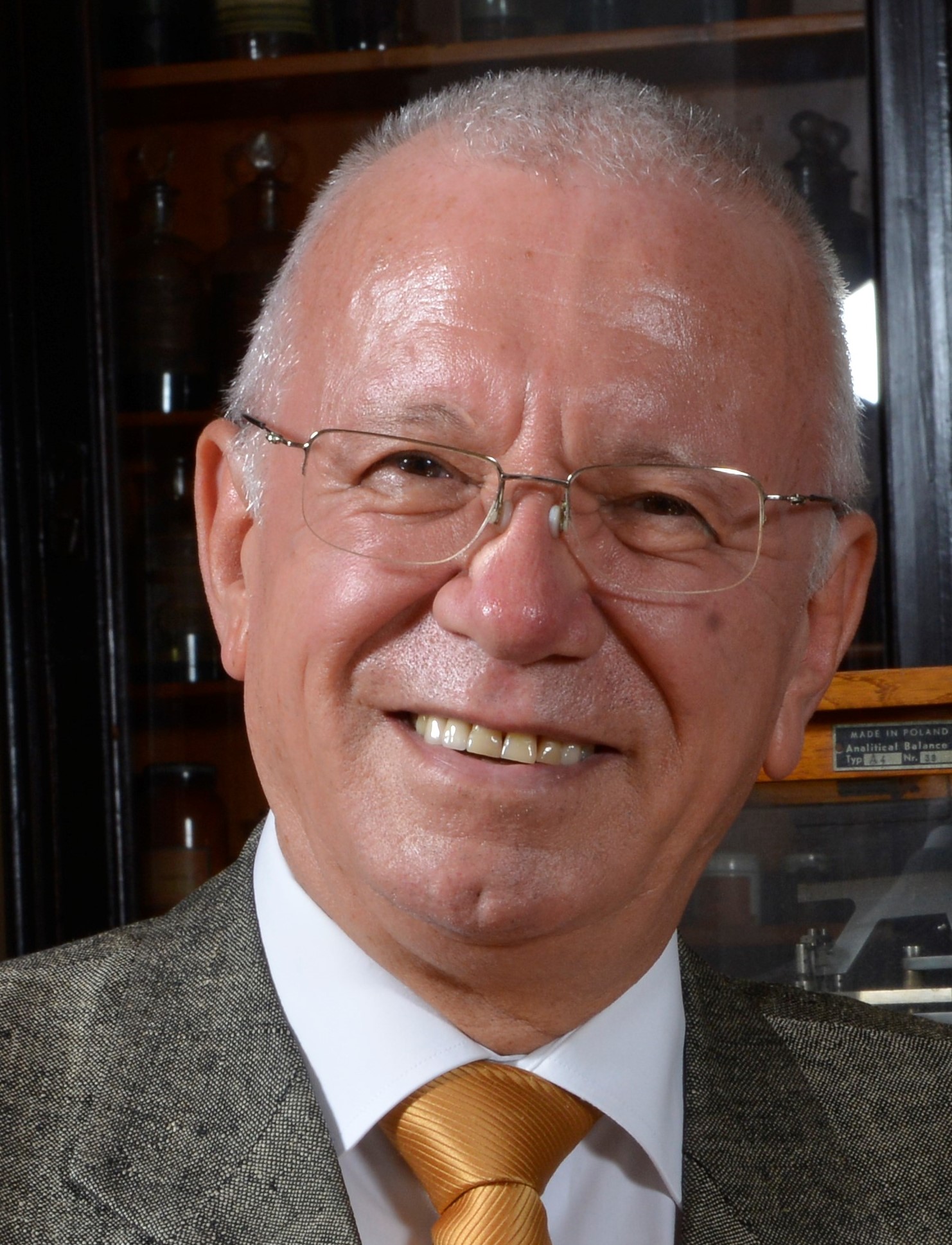
Global Trade of Essential Oils

Antimicrobial activity of essential oils and essential oil components on food-borne pathogens – recent applications and future perspectives
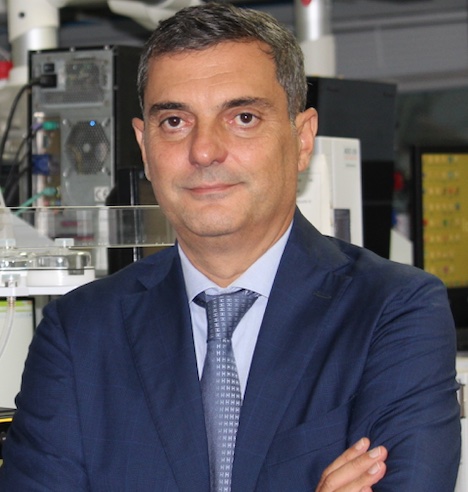
Advanced Sustainable Analytical methods for the Analysis of Essential Oils

Healthy smells and beyond: Aromatherapy today

Formulation of essential oils: Rational design and nanotechnology.

Pampering or stress?- Optimisation of volatile formation in plants
Final programme
The final programme available in pdf format
Final programme
Sunday, 8th September 2024
Registration
Opening Ceremony Györgyi Horváth, Éva Zámboriné Németh – Symposium Chairs
+ Short musical performance
Traditions of essential oil production in HungaryZsuzsanna Pluhár
MATE University, Budapest
ISEO Medal of Honor Presentations
Yoshinori Asakawa: Biologically Active Volatile Components from Liverworts and Their Application to Cosmetics Foods and Medicines
Chlodwig Franz: Application of essential oils in animal health from the 'One Health' perspective

Opening lecture – Plenary lecture (PL-1)
Global Trade of Essential Oils
Kemal Hüsnü Can Baser
Near East University in Nicosia, N. Cyprus
Keynote lecture
The value of having a multidisciplinary approach to essential oil research – reflecting on two decades of studying the medicinal-aromatic flora of South AfricaAlvaro Viljoen
Tshwane University of Technology, South Africa
Welcome dinner
Restaurant of Hunguest Hotel BÁL Resort
Monday, 9th September 2024
Registration desk is open
Session 1 Chairs: Agnieska Ludwiczuk, Nicolas Baldovini
Oral lectures

Plenary lecture (PL-2)
Advanced sustainable analytical methods for the analysis of essential oils
Luigi Mondello
Università degli Studi di Messina, Messina, Italy
(OL-01) Use and abuse of retention indices in essential oils analysis
Humberto Bizzo, Nathália S. Brilhante, Yada Nolvachai, Philip J. Marriott
Embrapa Agroindústria de Alimentos, Rio de Janeiro, Brazil
(OL-02) Predicted response factors as an efficient and validated analytical method to screen for volatiles in Cannabis sativa inflorescences
Alexis St-Gelais, Hubert Marceau, Rachel H. Fontaine, Sylvain Mercier, Dany Massé/span>
Laboratoire PhytoChemia, Saguenay, Canada
(OL-03) Preparative gas chromatography for the isolation of volatile terpenes for diabetes treatment
Danilo Sciarrone, Lorenzo Cucinotta, Francesca Cannizzaro, Luca Santi, Elisa Pannucci, Luigi Mondello
Messina Institute of Technology c/o Department of Chemical, Biological, Pharmaceutical and Environmental Sciences, Messina, Italy
Discussion
Coffee break
Session 1 (cont.) Chairs: Éva Zámboriné Németh, Kemal Hüsnü Can Baser
Oral lectures
(OL-04) Verification of Agarwood essential oil authenticity with handheld near infrared spectrometer
Mohammed Z.H. Chowdhury
Oudh Analytics, Rotterdam, The Netherlands
(OL-05) Investigating adulteration in commercial true lavender oils
Katarzyna Pokajewicz, Darya Lamaka, Piotr P. Wieczorek
Institute of Chemistry, University of Opole, Poland
(OL-06) Application of Artificial Intelligence in predicting essential oil composition and correlating with biological activity using NMR and IR data
Rino Ragno, Alessio Ragno, Roberto Capobianco, Eleonora Truzzi, Davide Bertelli, Sara de Siena and Stefania Benvenuti
Rome Center for Molecular Design, Department of Drug Chemistry and Technology, Sapienza University, Rome, Italy
(OL-07) Unfolding seasonal and diurnal variations of leaf aroma volatiles in Indian bay leaf – a potential source of valuable essential oil
Adinpunya Mitra, Sulagna Saha
Natural Product Biotechnology Group, Agricultural and Food Engineering Department, Indian Institute of Technology Kharagpur, India
Discussion
Group photo
Lunch Restaurant of the Hunguest Hotel BÁL Resort
Session 2 Chairs: Fatih Demirci, Johannes Novak

Plenary lecture (PL-3)
Healthy smells and beyond: Aromatherapy today
Iris Stappen
University of Vienna, Vienna, Austria
(OL-08) Effects of Alpinia zerumbet essential oils on human olfactory receptors and depressive symptoms of postmenopausal women
Je Tae Woo, Aki Yamano, Keisuke Ito, Saori Nishizima, Kimio Sugaya, Eisuke Kuraya, Takayuki Yonezawa, Hsueh-Kung Lin and Mark Bartlett
Research Institute for Biological Function, Chubu University, Nagoya, Japan
(OL-09) Aromatogram testing: Standardization of the clinical broth microdilution test to support the development of appropriate integrated antimicrobial therapies and address antibiotic resistance
Maura Di Vito, Mattia Di Mercurio, Melinda Mariotti, Abdesselam Zhiri, Maurizio Sanguinetti, Francesca Bugli
Dipartimento di Scienze Biotecnologiche di Base, Cliniche Intensivologiche e Perioperatorie, Università Cattolica del Sacro Cuore, Rome, Italy
(OL-10) Synergistic solutions: Essential oil compounds with conventional antimicrobials for skin infections
Sandy van Vuuren, Shivar Simbu, Ane Orchard, Maryna van de Venter
Department of Pharmacy and Pharmacology, Faculty of Health Sciences, University of the Witwatersrand, Parktown, South Africa
Discussion
Coffee break
Session 2 (cont.) Chairs: Sandy Van Vuuren, Humberto Bizzo
Young scientists’ oral lectures
(YOL-01) The combination of gas chromatography-based analysis and spectroscopy techniques for a thorough characterization of the essential oil of Piper gaudichaudianum Kunth from Brazil
Paola Donato, Lorenzo Cucinotta, Humberto Ribeiro Bizzo, Cicero Deschamps, Laura A. Duarte, Roger R. Cipriano, Wanderlei do Amaral, Wilson Loureiro, Danilo Sciarrone, Luigi Mondello
Messina Institute of Technology c/o Department of Chemical, Biological, Pharmaceutical and Environmental Sciences, Messina, Italy
(YOL-02) Chritmum maritimum L., an edible plant. Chemical composition, PCA analysis and food safety
Antonella Porrello, Alessandro Vaglica, Dario Savoca, Maurizio Bruno, and Francesco Sottile
Dipartimento di Scienze e Tecnologie Biologiche, Chimiche e Farmaceutiche (STEBICEF), Università degli Studi di Palermo, Palermo, Italy
(YOL-04) Exploring the anxiolytic potential of Cupressus torulosa essential oil: an in vivo approach
Piyush Bhalla, HR Chitme, VK Varshney
Chemistry and Bioprospecting Division, ICFRE-Forest Research Institute, Dehradun, India
(YOL-05) Interplay of drought and salt stress on the yield and composition of essential oil in Thymus pannonicus
Etri Karim, Gosztola Beáta, Pluhár Zsuzsanna
Department of Medicinal and Aromatic Plants, Institute of Horticultural Science, Hungarian University of Agriculture and Life Sciences, Budapest, Hungary
(YOL-06) Exploring the selective inhibitory activity of essential oils on the Alzheimer associated enzymes AChE and BChE: a comprehensive screening based on a bio-guided fractionation approach. Focus on Mentha sp. essential oils
Marta Pavarino, Cecilia Cagliero, Arianna Marengo, Carlo Bicchi, Sveva Dallere, Marina Boido, Alessandro Vercelli, Patrizia Rubiolo, Barbara Sgorbini
Department of Drug Science and Technology, University of Turin, Turin, Italy
Discussion
Poster presentations
Hunguest Hotel BÁL Resort, Tramontana II. room
Permanent Scientific Committee meeting
Hunguest Hotel BÁL Resort, Nevera room
Tuesday, 10th September 2024
Registration desk is open
Session 3 - EFEO IFEAT Scientific Platform on Proving Essential Oils‘ Unique Nature 1st partChairs: Daniel Strub, Jonathan Bonello
General introduction to the EFEO IFEAT Scientific Platform
Jocelyn Kurtz
EFEO IFEAT Scientific Platform Coordinator
Mane SA., Regulatory Affairs and Product Safety, Vouvry, Switzerland
Multidimensional complexity of natural complex substances: the case of essential oils
Sylvain Antoniotti
Research Director at CNRS and Director of the Institute for Innovation and Partnerships Flavour Fragrance Cosmetics at Université Côte d’Azur
Université Côte d’Azur, CNRS
Evaluation of the Endocrine Disruptor Risk on Essential Oils: Is Constituent Analysis Sufficient?
Mathilde Hagege
Léa Nature, Périgny, France
Coffee break
Session 3 (cont.) - EFEO IFEAT Scientific Platform on Proving Essential Oils‘ Unique Nature 2nd partChairs: Daniel Strub, Jonathan Bonello
Essential Oils & Skin Sensitization Quenching effect: myth or reality?
Marc Vocanson
Centre International de Recherche en Infectiologie, INSERM, Lyon, France
Genotoxicity, More than One Constituent Substances (MOCS), and Essential Oils
Peter Jenkinson
Consultancy for Environmental & Human Toxicology and Risk Assessment, CEHTRA SAS
Metabolism matters – understanding positive test results and relevance of reproduction studies on isolated essential oil constituents
Andreas Natsch
Givaudan
An experimental definition and an in silico methodology to predict biodegradation of mixtures
Paul Thomas
KREATiS. L’Isle d’Abeau, France
Environmental Assessment of Natural Complex Substances’ constituents
Sylvia Gimeno
DSM-Firmenich AG, Kaiseraugst, Switzerland
Lunch Restaurant of the Hunguest Hotel BÁL Resort
Session 4 Chairs: Chlodwig Franz, Patrizia Rubiolo
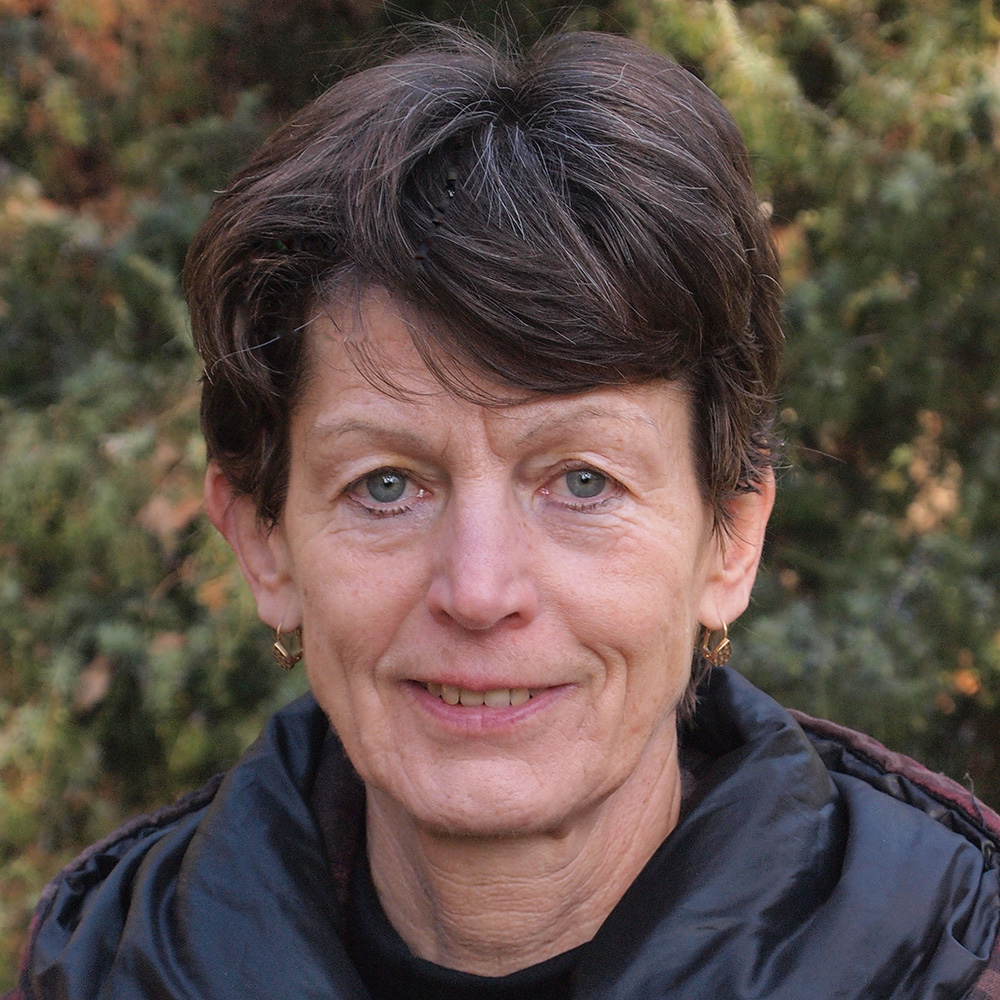
Plenary lecture (PL-4)
Pampering or stress? - Optimisation of volatile formation in plants
Éva Zámboriné Németh
Hungarian University of Agriculture and Life Sciences, Budapest, Hungary
(OL-11) Influence of water supply on essential oil of annual caraway (Carum carvi var. annuum L.)
Noémi Júlia Valkovszki, Tímea Szalóki, Árpád Székely, Ágnes Kun, Ildikó Kolozsvári, Szilvia Tavaszi-Sárosi, Mihály Jancsó
Research Centre for Irrigation and Water Management, Institute of Environmental Sciences, Hungarian University of Agriculture and Life Sciences, Szarvas, Hungary
(OL-12) Does the availability of water affect the biomass and secondary compound production in Ocimum basilicum L. ‘Genovese’?
Péter Radácsi, Sintayehu Musie Mulugeta
Department of Medicinal and Aromatic Plants, Institute of Horticultural Sciences, Hungarian University of Agriculture and Life Sciences, Budapest, Hungary
(OL-13) Repellent and attractant activity of ten plant essential oils and their compounds against the pea aphid
Virginie Lacotte, Marjolaine Rey, Sergio Peignier, Pierre-Edouard Mercier, Sébastien Livi, Pedro da Silva
INSA Lyon, INRAE, BF2I, UMR203, Villeurbanne, France
(OL-14) How sublethal concentrations of Origanum vulgare L. essential oil affect the growth potential of the pathogen Listeria monocytogenes in food environments
Annalisa Serio, Chiara Rossi, Francesco Buccioni, Francesca Maggio, Chiara Purgatorio, Antonello Paparella
Department of Bioscience and Technology of Food, Agriculture and Environment, University of Teramo, Teramo, Italy
(OL-15) Insights into the chemo-profiling of rhizome essential from Northeast Indian Zingiber officinale germplasm
Mohan Lal, Twahira Begum, Saikat Halder
Agrotechnology & Rural Development Division, CSIR-North East Institute of Science & Technology, Jorhat, India
(YOL-07) Exploring synergistic and antagonistic interactions: investigating antimicrobial and biofilm inhibitory activity in the oral cavity
Zuzanna Bacińska, Lucyna Balcerzak, Daniel J. Strub
Department of Chemical Biology and Bioimaging, Faculty of Chemistry, Wrocław University of Science and Technology, Wrocław, Poland
(YOL-08) Innovative approach for improvement of essential oil yield and quality in patchouli (Pogostemon cablin (Blanco) Benth.) through coloured shade net cultivation
Lopamudra Ballabh, Amardeep Yadav, Adinpunya Mitra
Agricultural and Food Engineering Department, Indian Institute of Technology Kharagpur, Kharagpur, India
Discussion
Poster presentations
Hunguest Hotel BÁL Resort, Tramontana II. room
Symposium dinner
Hunguest Hotel BÁL Resort, Tramontana I. room
Wednesday, 11th September 2024
Session 5 Chairs: Alvaro Viljoen, Iris Stappen

Plenary lecture (PL-5)
Antimicrobial activity of essential oils and essential oil components on food-borne pathogens – recent applications and future perspectives
Judit Krisch
University of Szeged, Szeged, Hungary

Plenary lecture (PL-6)
Formulation of essential oils: Rational design and nanotechnology
Aleksandar Széchenyi
University of Pécs, Pécs, Hungary
Coffee break
Session 5 (cont.)Chairs: Alvaro Viljoen, Iris Stappen
Young scientists’ oral lectures
(YOL-09) Essential oils combined with tetracycline restore antibiotic effectiveness against resistant strains of Salmonella enterica
Francesca Maggio, Chiara Rossi, Carlotta Lauteri, Alberto Vergara, Antonello Paparella, Annalisa Serio
Department of Bioscience and Technology for Food, Agriculture and Environment, University of Teramo, Teramo, Italy
(YOL-10) Lily of the valley odorants: synthesis and potential applications – preliminary result
Kinga Baberowska, Alicja K. Surowiak, Milena Z. Živković Stošić, Niko S. Radulović, Daniel J. Strub
Department of Chemical Biology and Bioimaging, Faculty of Chemistry, Wroclaw University of Science and Technology, Wroclaw, Poland
(YOL-11) Extraction and fractionation of Azorean Cryptomeria japonica female cones essential oil via hydro distillation: antifungal effects against Thielaviopsis paradoxa
Filipe Arruda, Ana Lima, Alexandre Janeiro, José Baptista, José S. Rosa, Alexandra Machado, A. Cristina Figueiredo, Elisabete Lima
Institute of Agricultural and Environmental Research and Technology, Azores University, Angra do Heroísmo, Portugal
(YOL-12) Quantitative activity-composition relationships through machine learning algorithm. Application to essential oil tested as acetylcholinesterase inhibitors
Roberta Astolfi, Eleonora Proia, Valentina Noemi Madia, Davide Ialongo, Luigi Scipione, Rino Ragno
Rome Center for Molecular Design, Department of Drug Chemistry and Technology, Sapienza University, Rome, Italy
(YOL-13) Cinnamomum tamala leaf essential oil attenuates lipopolysaccharide-induced inflammation in RAW 264.7 macrophage cells via regulation of the NF-κB signaling pathway
Sudipta Jena, Asit Ray, Ambika Sahoo, Omprakash Mohanta, Prabhat Kumar Das, Sanghamitra Nayak, Pratap Chandra Panda
Centre for Biotechnology, Siksha O Anusandhan (Deemed to be University), Kalinga Nagar, Bhubaneswar, India
(YOL-14) Exploring natural alternatives for preserving cosmetics: essential oils as antimicrobial agents
Alicja K. Surowiak, Aleksandra Kołodziej, Lucyna Balcerzak, Kinga Baberowska, Zuzanna Bacińska, Daniel J. Strub
Department of Chemical Biology and Bioimaging, Faculty of Chemistry, Wroclaw University of Science and Technology, Wroclaw, Poland
(YOL-15) Chemical diversity of essential oils from Hyptis suaveolens: Implications for management strategies of a global invasive weed
Sneha Rajput, Sanjay Gupta, V. K. Varshney
ICFRE-Forest Research Institute, Chemistry and Bioprospecting Division, Dehradun, India
Discussion
Closing remarks
Györgyi Horváth, Éva Zámboriné Németh – Symposium Chairs
Best Oral and Best Poster presentation sponsored by Taylor and Francis and CRC Press
Welcome to ISEO 2025
Lunch Restaurant of the Hunguest Hotel BÁL Resort
Post-conference guided tour to Balatonfüred – Tihany
List of Posters
Chemical composition, in vitro antioxidant and anti-inflammatory properties of essential oils of sawdust and resin-rich bark from Azorean Cryptomeria japonica (Cupressaceae)Filipe Arruda
AI4EssOil: Revolutionizing essential oil insights through Artificial IntelligenceRoberta Astolfi
Fractionation of specific terpene families prior to biological assays exploiting preparative gas chromatographyFrancesca Cannizzaro
Annual yield variation of labdanum resin obtained from Cistus ladanifer L. plants of different ageVeronika Chaloupková
Extraction and bio-conversion of Limonene from waste sweet lime (Citrus limetta) peels by baker’s yeastOlivia Dhara
In vitro and in vivo Antihyperglycemic effect of Curcuma amada rhizome essential oil in STZ induced diabetic ratsAvinash Gangal
In vitro antimicrobial evaluation of Salvia sclarea and Origanum vulgare essential oils in combination against Sinusitis pathogensAyşe Esra Karadağ
Chemical composition of essential oils from different parts of Heracleum crenatifolium Boiss. in TürkiyeDamla Kirci
Exploring the potential biological activities and chiral composition of Lippia origanoides Kunth essential oil: inhibition of enzymes linked to Alzheimer’s disease and type 2 diabetesMarta Pavarino
Effect of wintergreen essential oil and black seed fatty oil in contact dermatitis in vivo modelSarah Shubail
Nanoencapsulated Coriandrum sativum essential oil as shelf-life enhancer of bananasMonisha Soni
Bifora testiculata (L.) Spreng. essential oil and its principal constituent as anticancer agentAlessandro Vaglica
Valorization of ginger leaf and peel waste into essential oils as natural grain protectants against major stored product insectsNaduvilthara U. Visakh
Phytochemical profiling and bioactivity assessment of volatile components of Nectaroscordum tripedale Trautv. from Iran: Antioxidant, antimicrobial, and cytotoxic investigationsMahdi Yaghoobi
Aroma profile of fresh R.alba L. blossom by solid-phase microextraction and head space gas chromatographyDaniela Antonova
Volatile organic compounds in traditional Bulgarian red wines - development of fast and easy analytical method using solid-phase microextraction and head space gas chromatographyDaniela Antonova
Quality of the essential oil from two hop varieties introduced in Rio de Janeiro, BrazilHumberto Bizzo
Combination of thyme, tea tree essential oils and antibiotics against MRSA and Pseudomonas aeruginosaBence Bordás
Studies on the composition of floral scent and essential oils of soapwort (Saponaria officinalis), growing in the wild in Lithuania, and the antioxidant activity of these oils and alcoholic extractsJurga Būdienė
Chemical composition and biological activity of Juniperus sabina, Juniperus foetidissima, and Juniperus phoenicea essential oilsDanka Bukvički
In vitro wound healing evaluation of Mentha spicata, Matricaria chamomilla essential oils with Cocos nucifera oil nanoemulgel formulationsFatih Demirci
Chemical and biological evaluation of three Cineol rich herbal drug and infusion volatilesBetül Demirci
Wound care formulation using Chitosan and Hamamelis preparationsFatih Demirci
Essential oil profile of pellets from hop cultivars produced in South BrazilCicero Deschamps
Effects of solvent free-microwave green extraction of essential oil from orange peel (Citrus sinensis L.) on shelf life of flavoured liquid whole eggs during storage under commercial retail conditionsDjamel Djenane
Mentha citrata essential oil phytochemical constituents and antiproliferative activityHurija Džudžević-Čančar
Essential oils of garden-growing lavender species: In vitro antimicrobial activityHurija Džudžević-Čančar
New advances from the Corsican Liverwort Porella arboris-vitaeManal El Ali
Comprehensive assessment of hydrolates produced from different medicinal plantsMaria Filatova
Effects of different preservation methods on the active substances and colour properties of Lemonbalm (Melissa officinalis L.) leavesBeáta Gosztola
Evaluation of Thymus serpyllum L. and Pinus nigra Aiton. essential oil combinations against human pathogensAyşe Esra Karadağ
Terpenoids diversity of Cannabis essential oilIskra Davkova
Antibacterial and antibiofilm effect of fennel essential oil, fennel honey and their combinationRegina Koloh
Diversity of aroma characteristics of Alpinia zerumbet and differences from its closely related speciesEisuke Kuraya
Biological activities, GC/MS analysis and computational approaches of rhizome Homalomena aromatica (Spreng.) Schott essential oil - an indigenous plant to Northeast IndiaMohan Lal
Essential oil from basil genotypes: fertilizers, seasons and growing conditionsJosé Magno Queiroz Luz
Characterization of yield, chemical profile and antioxidant capacity of Salvia rosmarinus Spenn. essential oilVeronika Chaloupková
Vapour phase anticandidal activity from Pimenta pseudocaryophyllus (Gomes) Landrum essential oilPaulo Moreno
Investigation of the anti-biofilm and anti-QS effect of selected essential oils tested on nosocomial bacteriaViktória Lilla Balazs
Comparison of the free volatile compounds composition isolated from wild and cultivated species of the Genus Veronica from moderate habitatsMarija Nazlić
The essential oil of Alpine Rhododendron honeyJohannes Novak
Directed evolutionary engineering of the non-mevalonate pathway for efficient terpenoid production as aroma ingredientsYumi Onozato
Inhibitory effects of lavender (Lavandula angustifolia Mill.) essential oil and main component (linalool) against biofilm-forming bacteria causing respiratory diseasesEdit Ormai
Lavandula species and varieties: resources of essential oils and distillation by-products of different qualityZsuzsanna Pluhár
Essential oil intervention: The antimicrobial and anti-biofilm properties of clove oil and Eugenol against vibrio cholerae O1Lii Poojara
Comparative GC-MS study of essential oil constituents: Headspace vs condensed phase methods with steam-distilled extractsFilippo Sapienza
Quality assessment and authentication of lavender essential oilBrett Smith
Evaluation of different spearmint populationsSzilvia Tavaszi-Sárosi
Aroma characterization of commercial Alpinia zerumbet essential oils by fingerprinting analysisAkiko Touyama
How effective are essentiael oils in inhibiting polymicrobial environments?Sandy van Vuuren
Effect of Alpinia zerumbet essential oils on behavioral characteristics in ovariectomized miceYamano Aki
Identification of 4,8-dimethyldeca-4,7,9-trienal compounds in the headspace aroma of blooming gardenia flowerHiroki Yamagiwa
Study of the essential oil and conservation of the Andean aromatic species Aloysia fiebrigii (Hayek) Moldenke, from the Cusco region, PeruAlberto Martín Abozaglo Jara
Timetable
| Sunday, 8 September | Monday, 9 September | Tuesday, 10 September | Wednesday, 11 September |
| Registration | Plenary lecture | EFEO IFEAT Scientific Platform on Proving Essential Oils‘ Unique Nature | Plenary lecture |
| Oral Lectures | Plenary lecture | ||
| Lunch | Lunch | Young Scientists’ lecture and Oral lecture | |
| Opening Ceremony | Plenary lecture | Plenary lecture | Closing Remarks |
| ISEO Medal Ceremony | Oral Lectures | Young Scientists’ lecture | Lunch |
| Opening Lectures | Poster Session | Poster Session | Post conference tour - optional (Balatonalmádi - Balatonfüred - Tihany - Balatonalmádi) |
| Plenary lecture | Scientific Committee meeting | ||
| Welcome dinner at the venue | Symposium dinner at the venue |
Call for Papers
The scientific program will include both oral and poster presentations. A specific session will be dedicated to presentations from young scientists, who we like to encourage to register for the 'Young Scientist Session'.
ISEO2024 Submission of abstracts
Abstract: You are invited to submit original contributions for oral and poster presentations related to the topics of the Symposium. The use of an abstract template (maximum 3 pages A4 total for one submission) is mandatory. Correspondence regarding the abstracts will only be sent to the corresponding author. It is their responsibility to forward the information to all co-authors. Every effort will be made to accommodate the author’s preference for oral presentation or poster, but the organizers reserve the right to make the final decision. At least one of the authors must register to the congress, otherwise the abstract will not be considered by the Scientific Committee. One registered participant may submit two abstracts.
Oral presentations: PowerPoint, PDF presentations are accepted on USB sticks. The presentation has to be copied to the laptop at the beginning of the session.
Poster presentation: Poster size: A0 (841 mm x 1189 mm) Orientation: Portrait
Topics of ISEO 2024
In 2024, the Symposium will include the following topics:
- utilization and biological activities of essential oils and volatiles
- breeding, cultivation and post-harvest treatment of volatiles containing plants and other organisms
- ecological importance of essential oils and volatiles
- new trends in the production and analysis of essential oils
- sourcing and trade of essential oils
- biological variability of volatiles
- sensorial aspects of volatiles
- molecular and metabolomic trends in volatiles
- biotransformation and biocatalysis of volatile compounds
- regulatory aspects, toxicology of essential oils and their compounds
- nanotechnology of essential oils and natural volatiles
Key Dates
Deadline for Submission of Abstracts: June 2, 2024
Deadline for Early Bird Registration: June 30, 2024
Sponsors
The ISEO attracts the attention of participants not only from European countries but also from the broader scientific world focusing on essential oils, e.g. South Africa, Turkey, United States, Brazil, Chile, Japan, Israel, Egypt, among others. During the ISEO Symposium, we provide an excellent possibility for sponsors and exhibitors to meet with scientist coming from academic sector and with industrial partners.
We offer you highly scientific topics, stimulating presentations and deep discussions combining with colorful touristic activities around Lake Balaton. In 2024, the Symposium will include topics e.g. on the field of nanotechnology of essential oils and natural volatiles; utilization and biological activities of essential oils and volatiles; aromatherapy; breeding, cultivation and post-harvest treatment of essential oil bearing plants; new trends in the production and analysis of essential oils; regulatory aspects, toxicology of essential oils and their compounds.
If your company is interested to participate, you are able to download our Exhibition and Sponsorship kit, including the Application Form below.
Downloadable SponsorkitGold Sponsors
Exhibitors
Supporter
Registration
Registration is required for all conference participants preferably until 30 June 2024.
Full registration
€ 450
€ 370 (early bird)
- access to the scientific sessions
- symposium materials
- electronic abstract book
- get-together party
- three lunches
- coffee and snacks during symposium breaks
Student registration
€ 300
€ 270 (early bird)
- access to the scientific sessions
- symposium materials
- electronic abstract book
- get-together party
- three lunches
- coffee and snacks during symposium breaks
Accompanying person
€ 250
€ 230 (early bird)
- get-together party
- three lunches
- coffee and snacks during symposium breaks
Please note, this category is dedicated for spouses, family members, etc., not for experts of the field, the category neither contains access to the Congress and Symposium sessions, nor the scientific materials.
Terms and conditions of participation
Advanced online registration is a condition of participation in the workshop. During the online registration you should accept the terms and conditions of participation as well as the terms of cancellation written on this website. The registration fee/accompanying person’s registration fee includes entertainment allowances, such as catering services, reception, dinner etc. In the final invoice the amount of these services will be indicated as intermediary service. See also the general terms and conditions here.
Cancellation policy of registration
All the cancellations and changes must be sent to Diamond Congress Ltd. in written form. All refunds will be processed after the ISEO 2024. Please send your exact bank account details in the written cancellation.
Refund of the registration fee will be made as follows:
- 100% refund (minus an administrative fee of 50 Euro) –
in case of cancellation received before 30 June 2024 - No refund – in case of cancellation, received after 30 June 2024
Payment
All payments should be made in Euro. All charges due to bank transfers have to be paid by the sender. We advise you to bring the proof of payment with you when registering for the event in Budapest.
Bank transfer has to be made to
Raiffeisen Bank Zrt.
Address: 1015 Budapest, Széna tér 1/a.
International Bank Account Number:
HU79 12010154 00175156 00200001
SWIFT code: UBRT HUHB
Credit Card
For the online payment VISA, EuroCard/MasterCard number are suitable with expiry date, card holder’s name, billing address of the cardholder and CVV code (the last three digits on the back of the credit card where the signature is – only VISA and EC/MC). For further details please read our short manual
Hotels
Hunguest BÁL Resort - Venue Hotel
